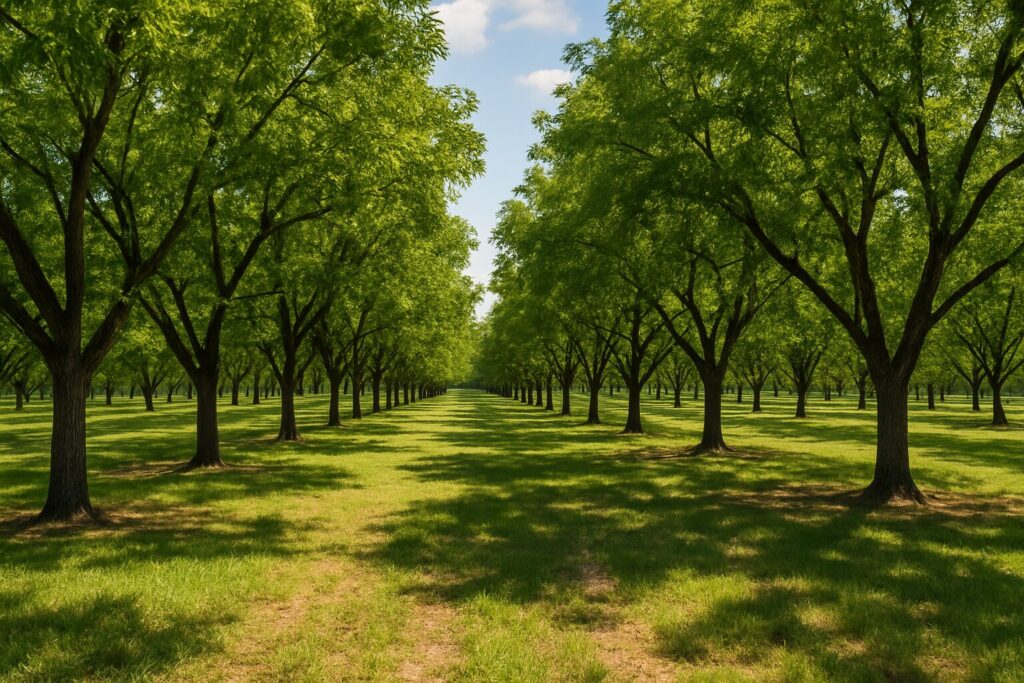
Discover how retirees are earning steady income from tangible, alternative investments with long-term staying power.
If you’re a retiree looking for income and safety, you may have already realized that the traditional 60/40 portfolio isn’t what it used to be. Bonds don’t yield what they once did, and the stock market can be a roller coaster.
Enter real-world assets—tangible, non-traditional investments like private credit, farmland, and timberland that offer income, inflation protection, and long-term growth. These assets have been used for decades by institutions and endowments, and now they’re increasingly accessible to everyday investors—especially through ETFs and publicly traded funds.
In this post, we’ll introduce these under-the-radar income generators and explore six ETFs retirees can use to tap into them safely and easily.
✅ 1. Private Credit: Lending Without the Banks
Private credit refers to loans made to businesses without going through traditional banks. These loans are often senior-secured, meaning they’re backed by collateral and sit at the top of the repayment list.
For retirees, private credit offers:
- High yields (often 8%–12%)
- Floating interest rates (helpful in rising rate environments)
- Low correlation to stock and bond markets
While private credit was once limited to institutions, it’s now accessible via publicly traded funds and ETFs.
🧾 Two ETFs to Consider:
- Owl Rock Capital Corp. (OBDC) – A top-tier Business Development Company (BDC) with a diversified portfolio of senior loans and consistent dividend payouts around 9%.
- Blue Owl Real Estate Income Corp. (OREC) – Offers access to both private credit and real estate income. Pays a steady monthly dividend and emphasizes capital preservation.
📌 Why it’s good for retirees: Consistent income, lower volatility, and a hedge against inflation—all without the drama of growth stocks.
✅ 2. Farmland: Grow Income From the Ground Up
Farmland is one of the oldest and most reliable asset classes on the planet. As the global population grows and food demand increases, productive farmland becomes more valuable.
Benefits include:
- Inflation protection
- Steady income from crop leases and appreciation
- Low volatility and minimal correlation with stocks
🌾 Two ETFs to Consider:
- Farmland Partners Inc. (FPI) – A publicly traded farmland REIT with a diversified portfolio of farms across the U.S. It earns rental income from farmers and offers potential land appreciation.
- Gladstone Land Corp. (LAND) – Owns farms that produce fruits, vegetables, and nuts—often under long-term leases. Offers monthly income and inflation-adjusted lease terms.
📌 Why it’s good for retirees: You get access to land-backed income without having to buy or manage a farm yourself.
✅ 3. Timberland: Renewable, Recession-Resistant, and Rewarding
Timberland combines the safety of land ownership with the cash flow from harvesting timber. Trees grow over time, whether the market is up or down, and can be sold when prices are right.
Benefits include:
- Inflation hedge through hard assets
- Recurring income from timber sales and land leases
- Low correlation to traditional financial markets
🌲 Two ETFs to Consider:
- iShares Global Timber & Forestry ETF (WOOD) – Tracks global timber and forestry companies. Exposure includes paper, lumber, and forest products. Long-term growth with a green, tangible twist.
- Invesco MSCI Global Timber ETF (CUT) – Focuses on companies that own or manage timberland worldwide. Offers global diversification with a strong real asset base.
📌 Why it’s good for retirees: It’s a patient, renewable income source. Plus, timberland historically performs well in inflationary environments.
✅ Real-Life Example: Mary’s Alternative Income Portfolio
Mary, a 67-year-old retiree, wanted to protect her savings while generating income. She built a simple portfolio that included:
- 25% in private credit through OBDC and OREC
- 15% in farmland via LAND
- 10% in timberland through WOOD
- 50% in dividend ETFs and short-term bonds
Her results? A blended income yield of over 6%, reduced stock market exposure, and a portfolio grounded in real assets she could understand.
✅ The Bottom Line
You don’t have to be a billionaire or institutional investor to benefit from real-world assets. With today’s ETFs and REITs, retirees can tap into:
- Private lending (for high, floating-rate income)
- Farmland (for food-driven growth and stability)
- Timberland (for inflation protection and renewable income)
These assets offer steady yields, tangible backing, and portfolio diversification—exactly what retirees need in uncertain times.
⚠️ Disclaimer
This content is for educational and informational purposes only. It does not constitute investment, tax, or legal advice. Investing involves risk, including the potential loss of principal. Always consult with a qualified financial advisor before making investment decisions. The author is not a licensed investment advisor and does not offer personalized investment recommendations.